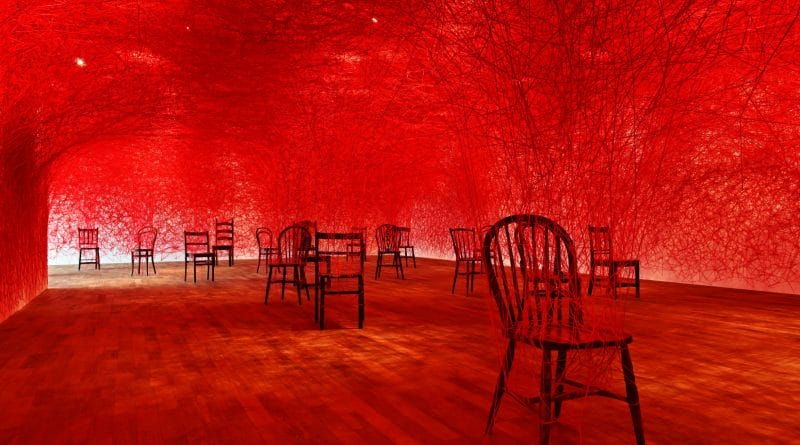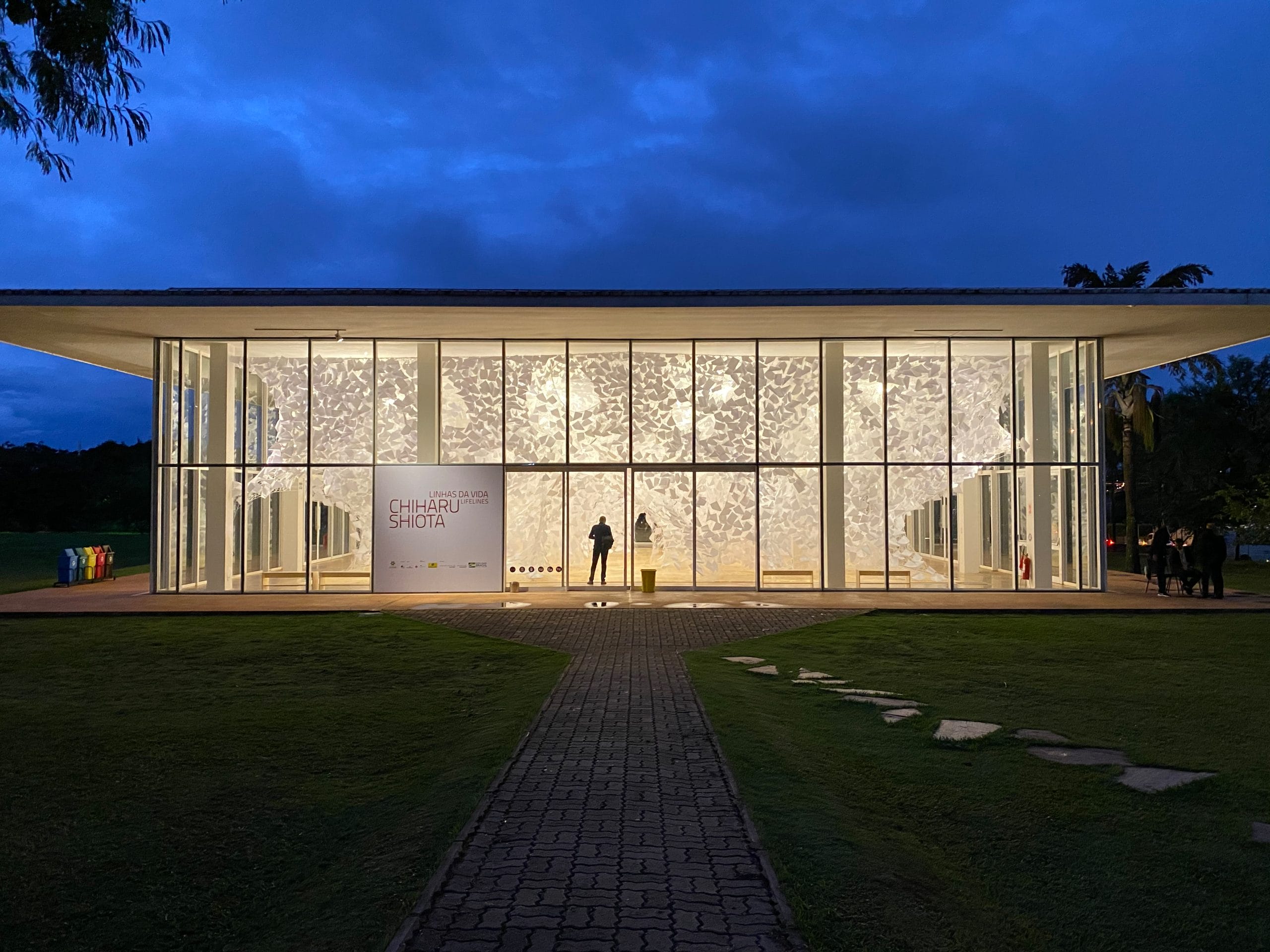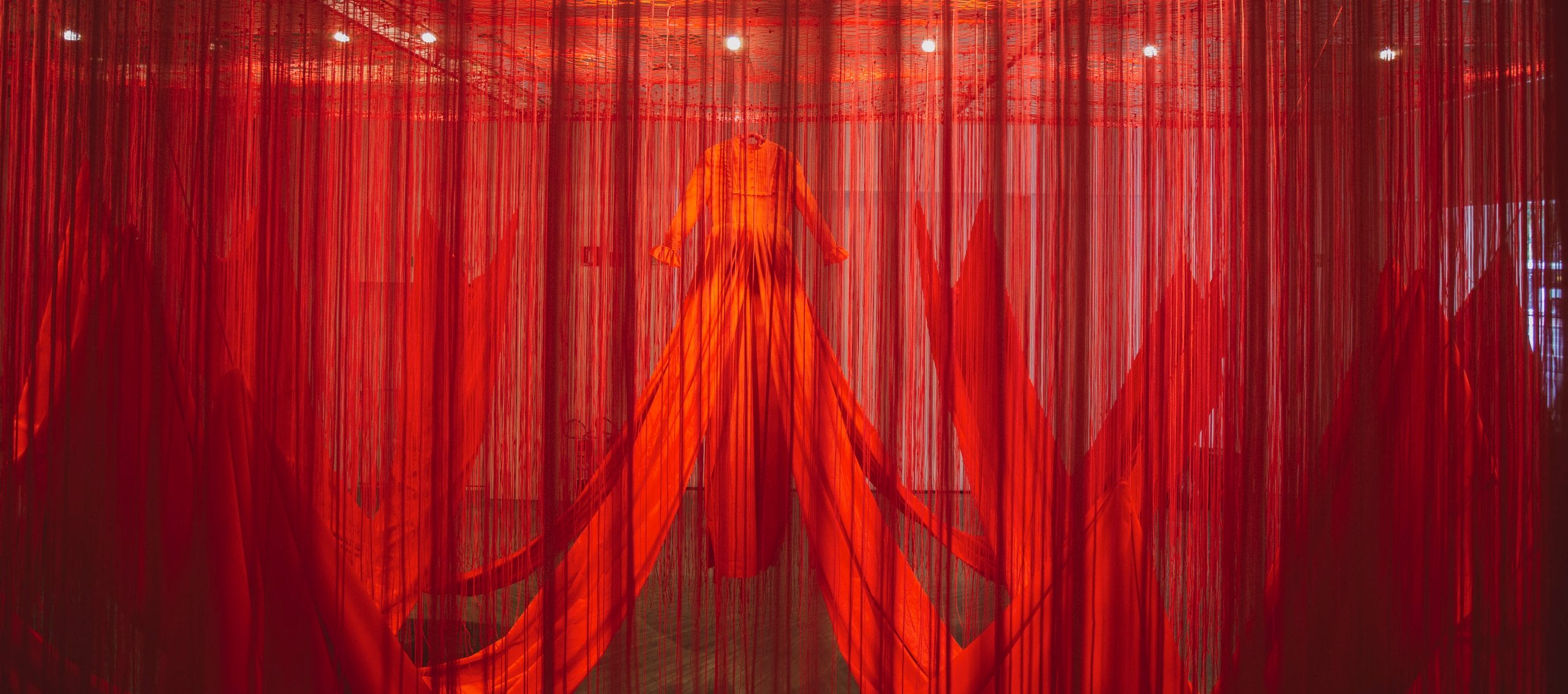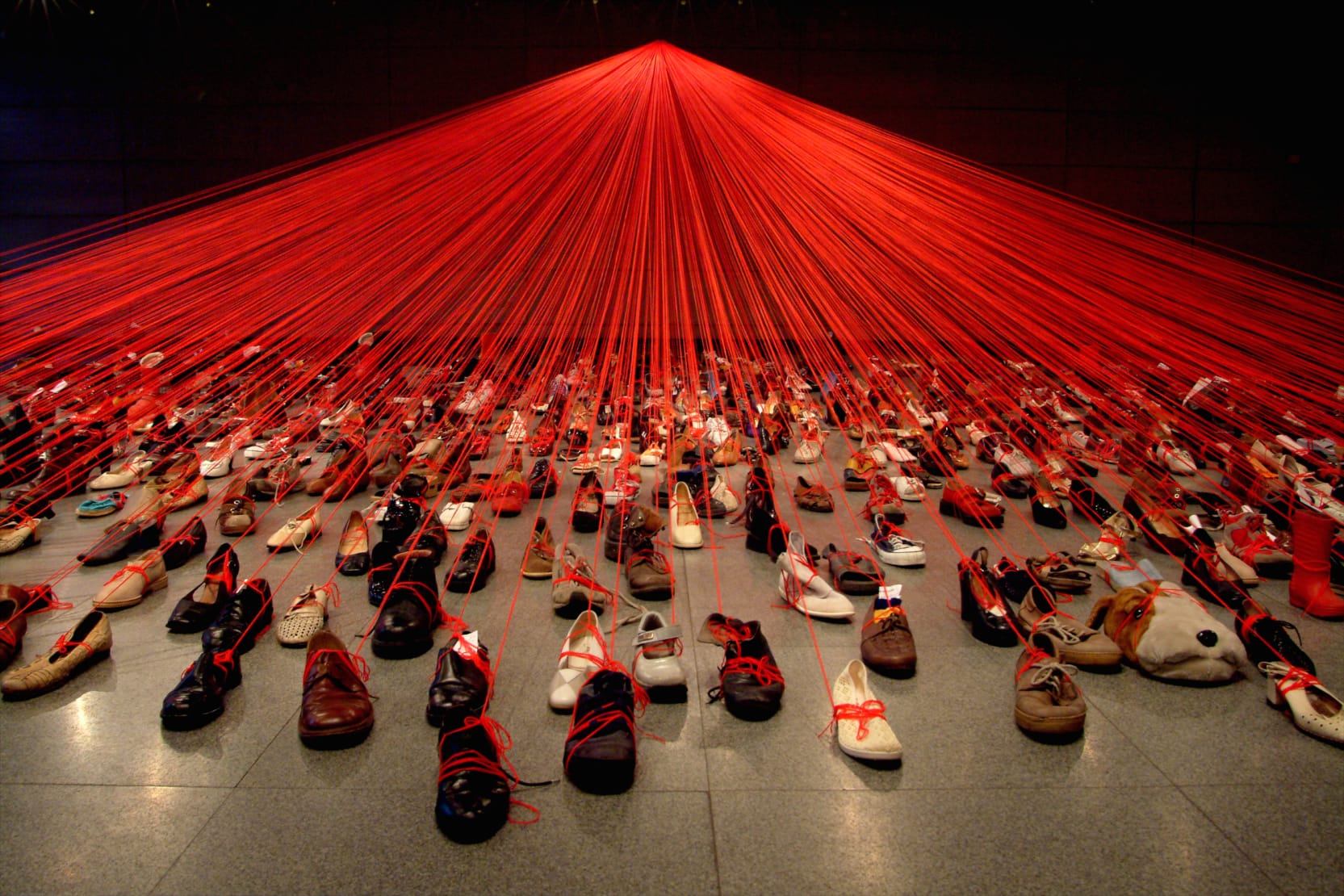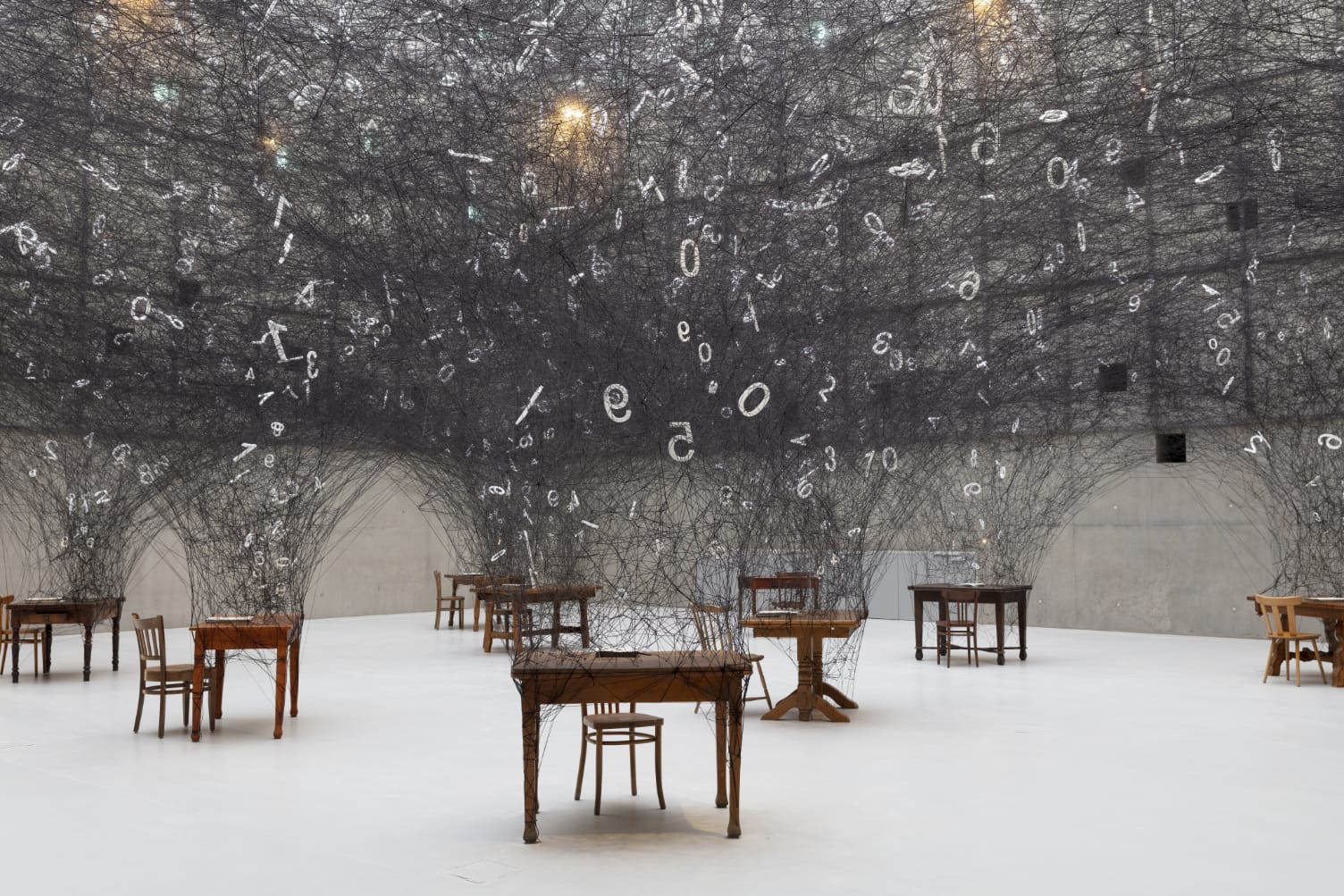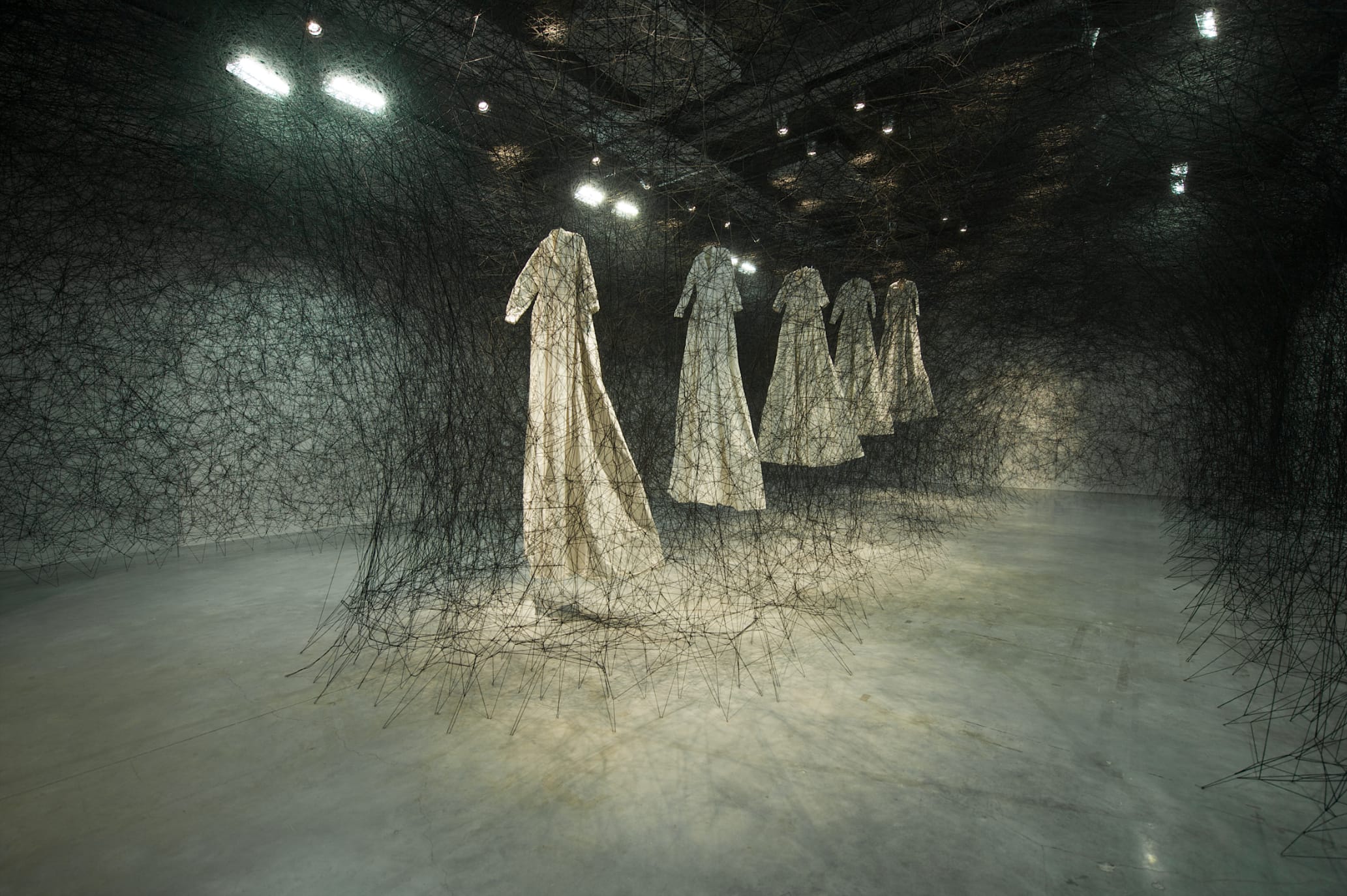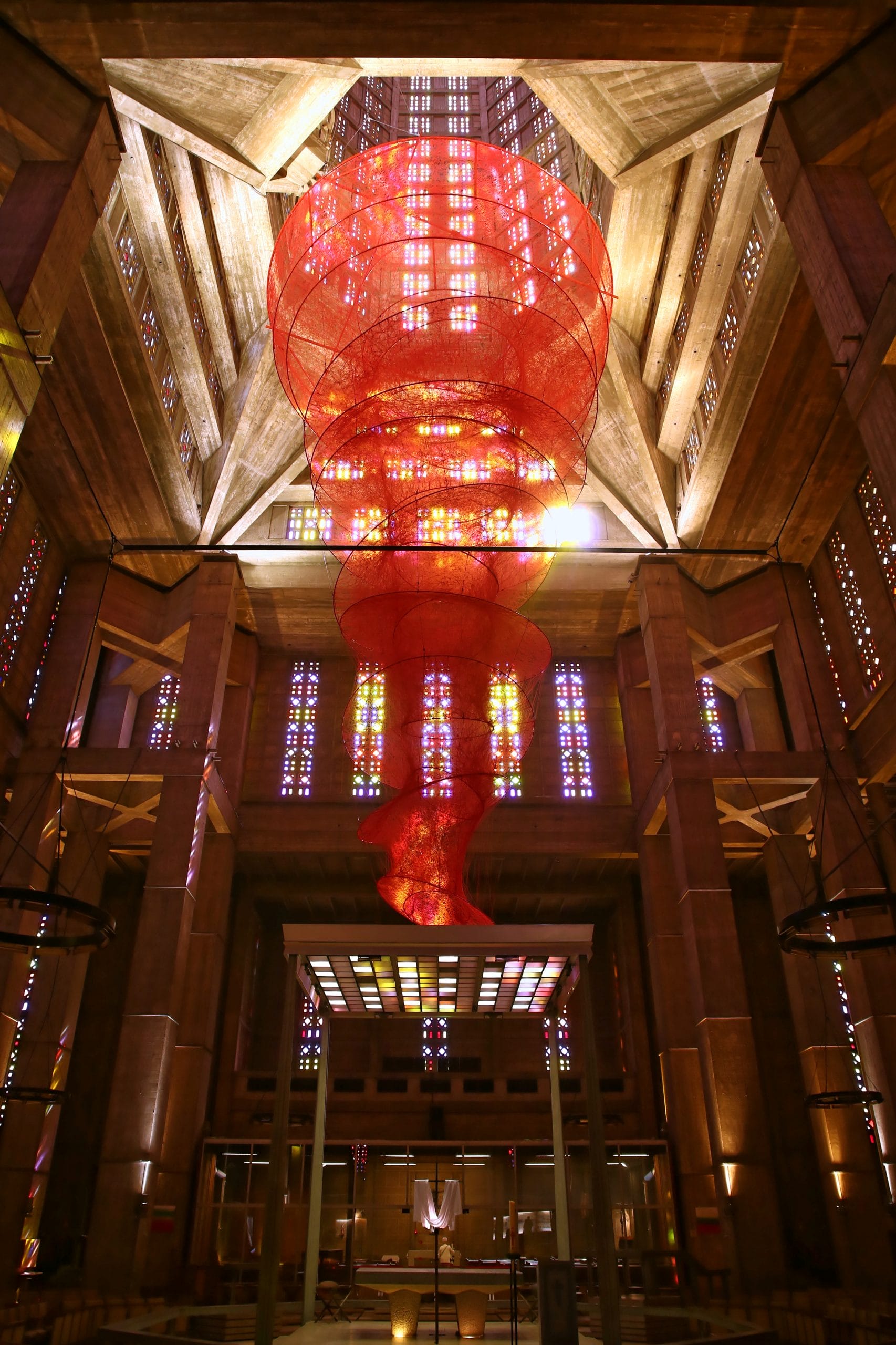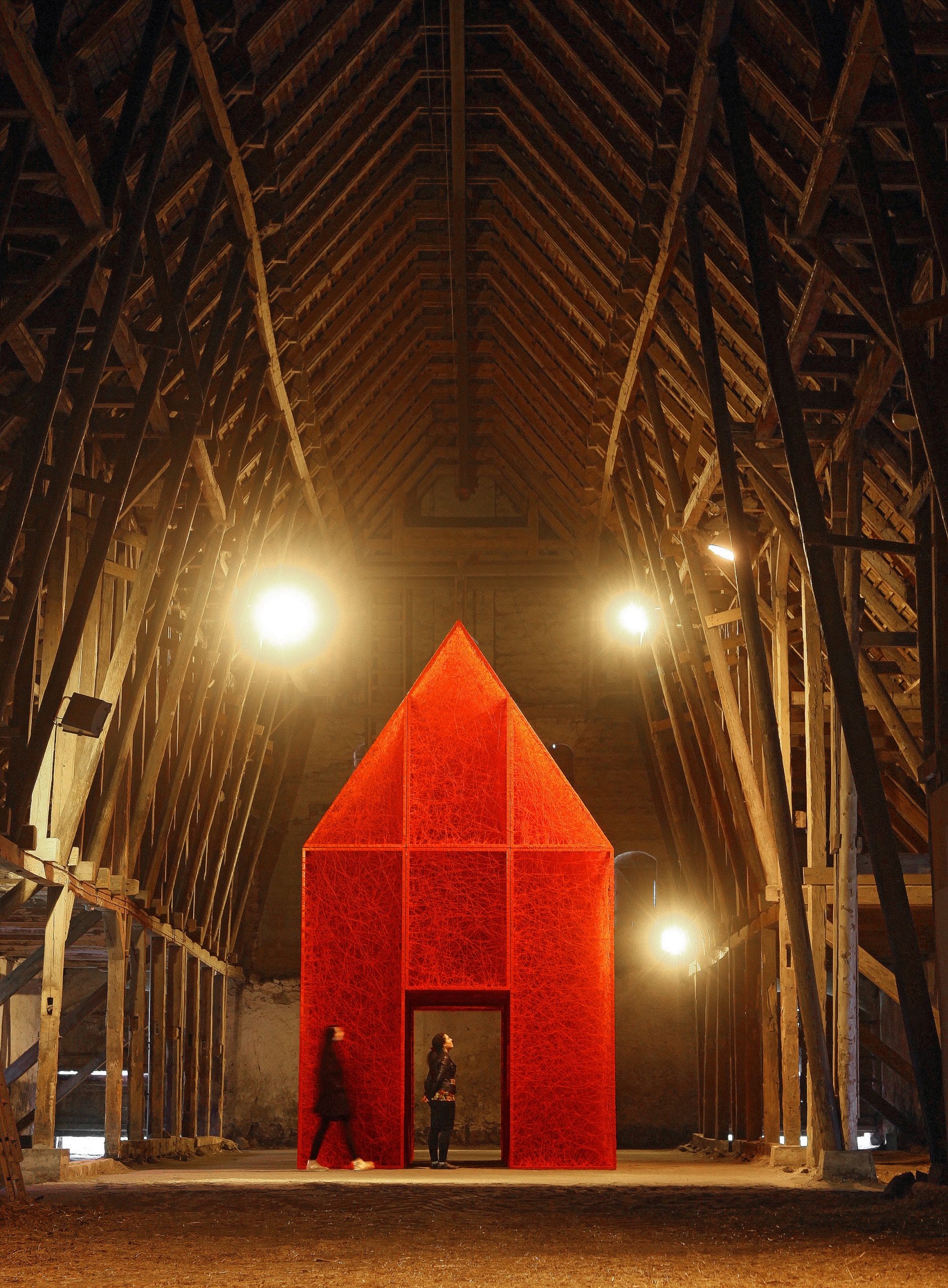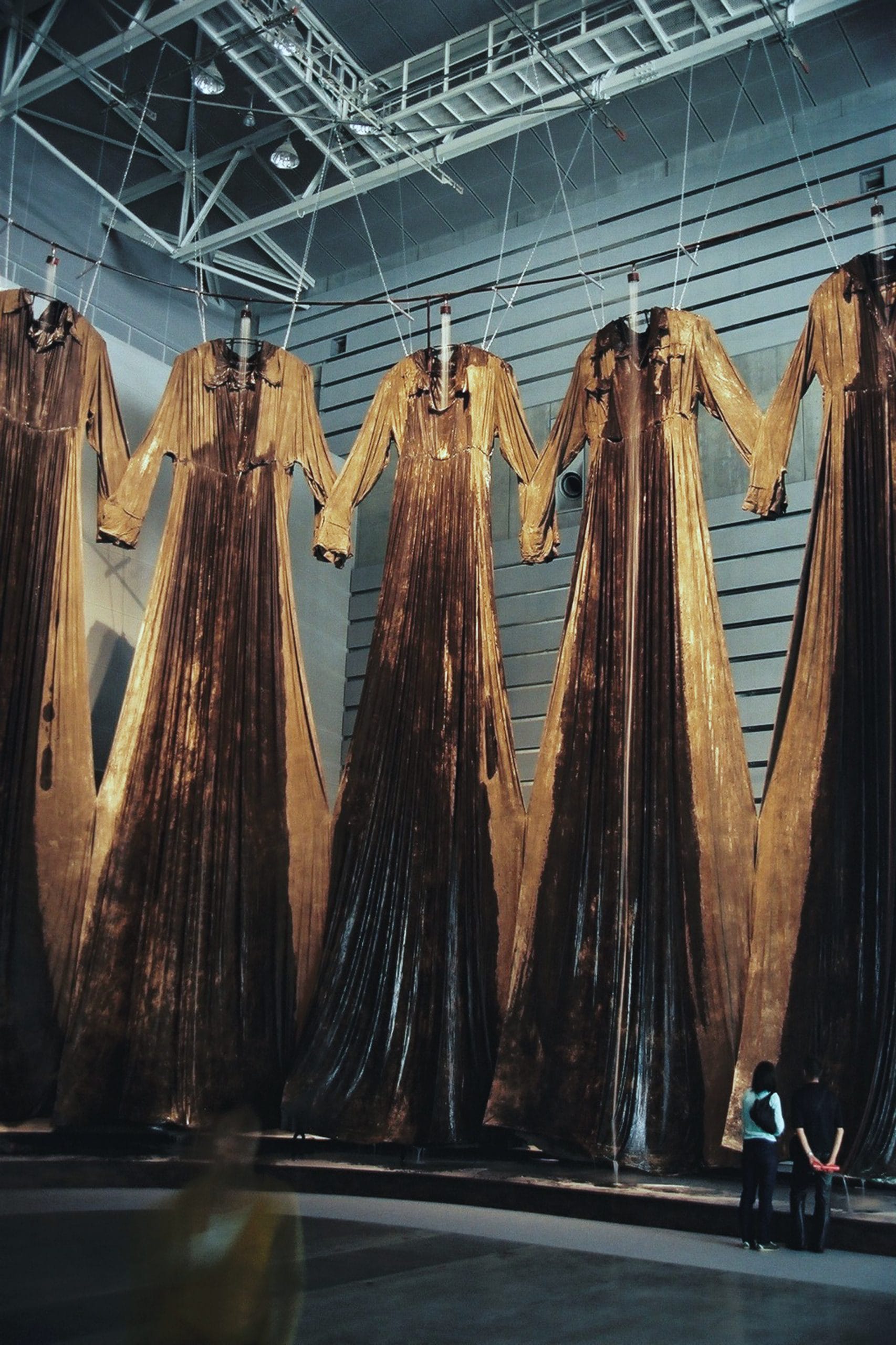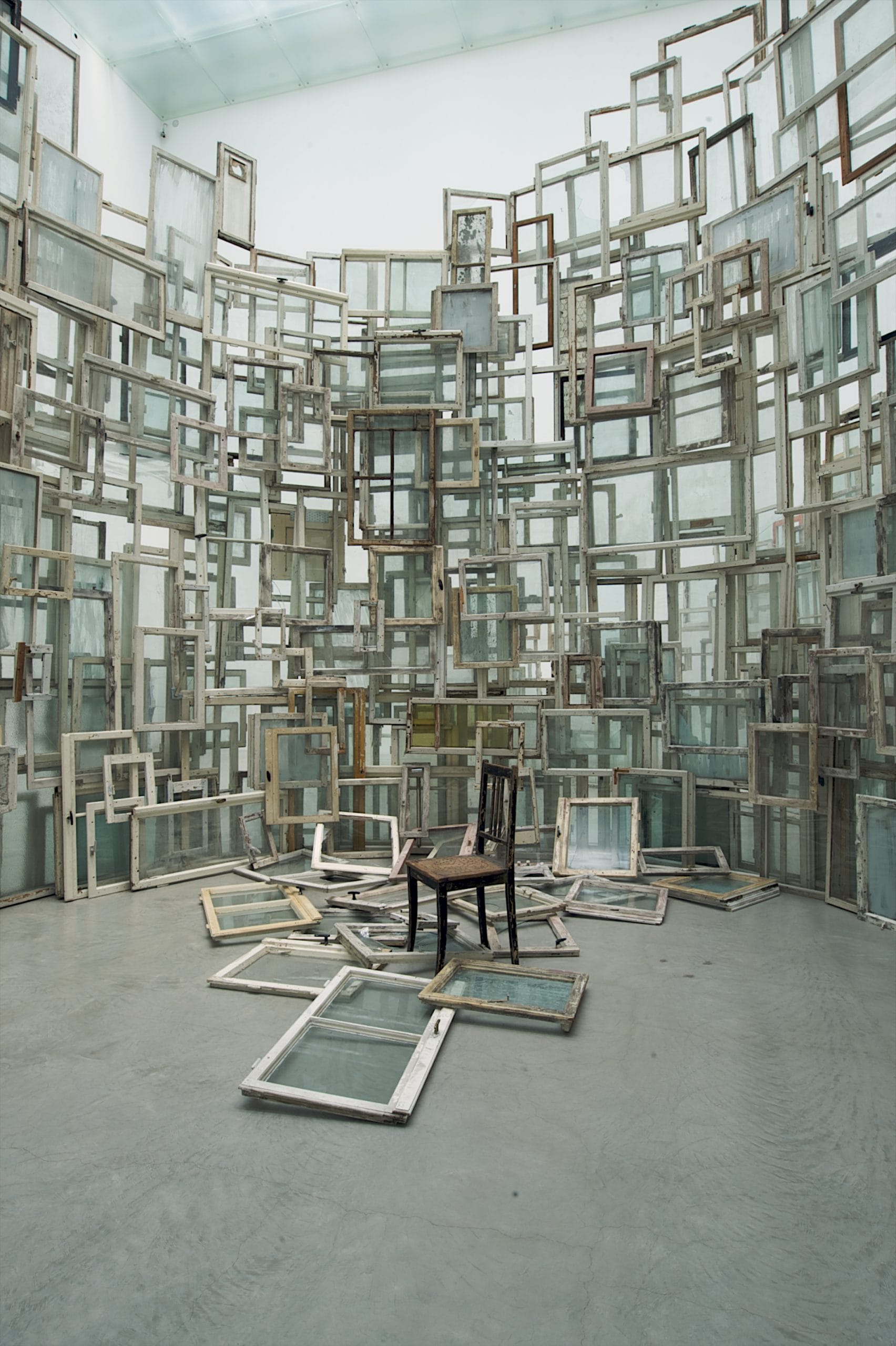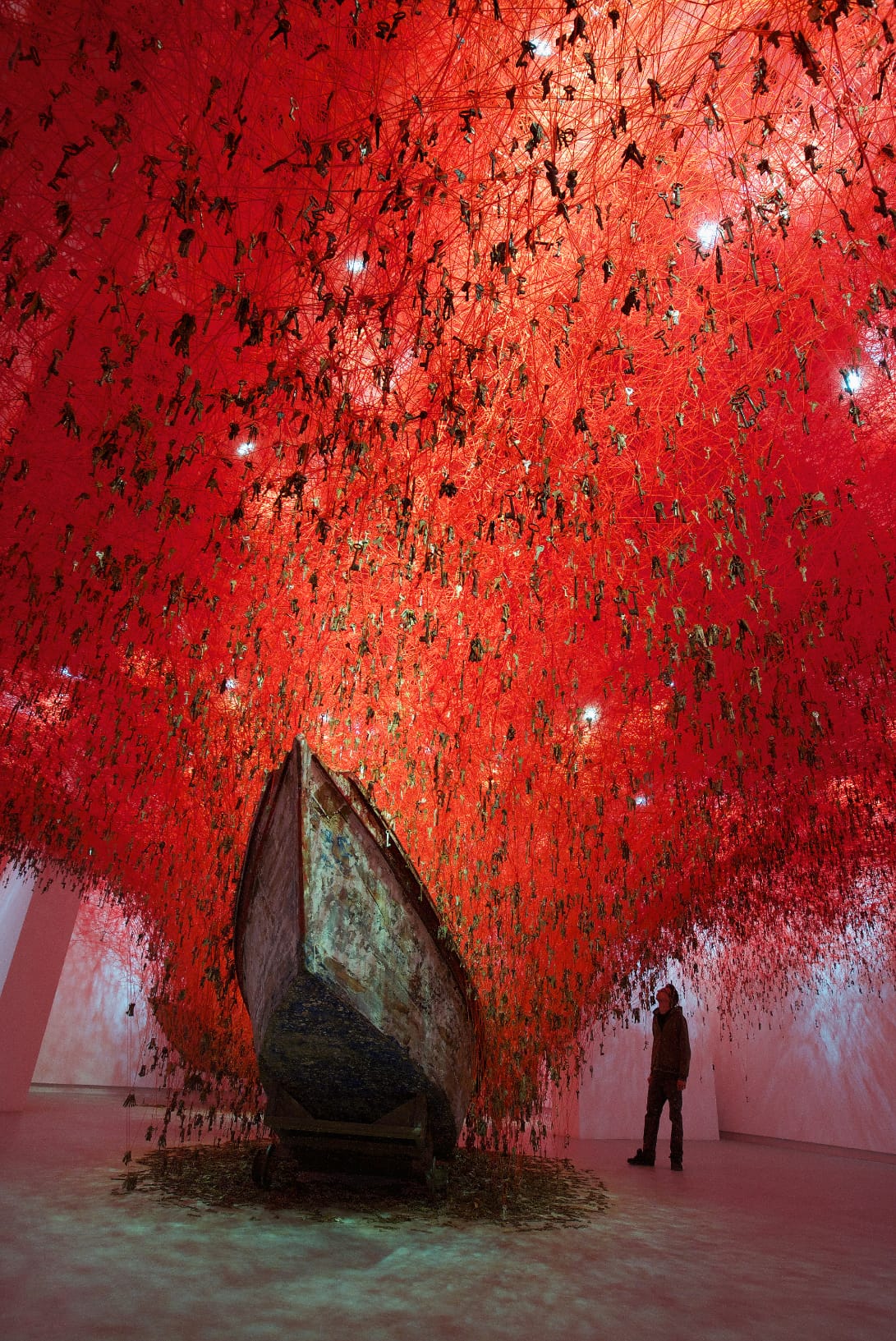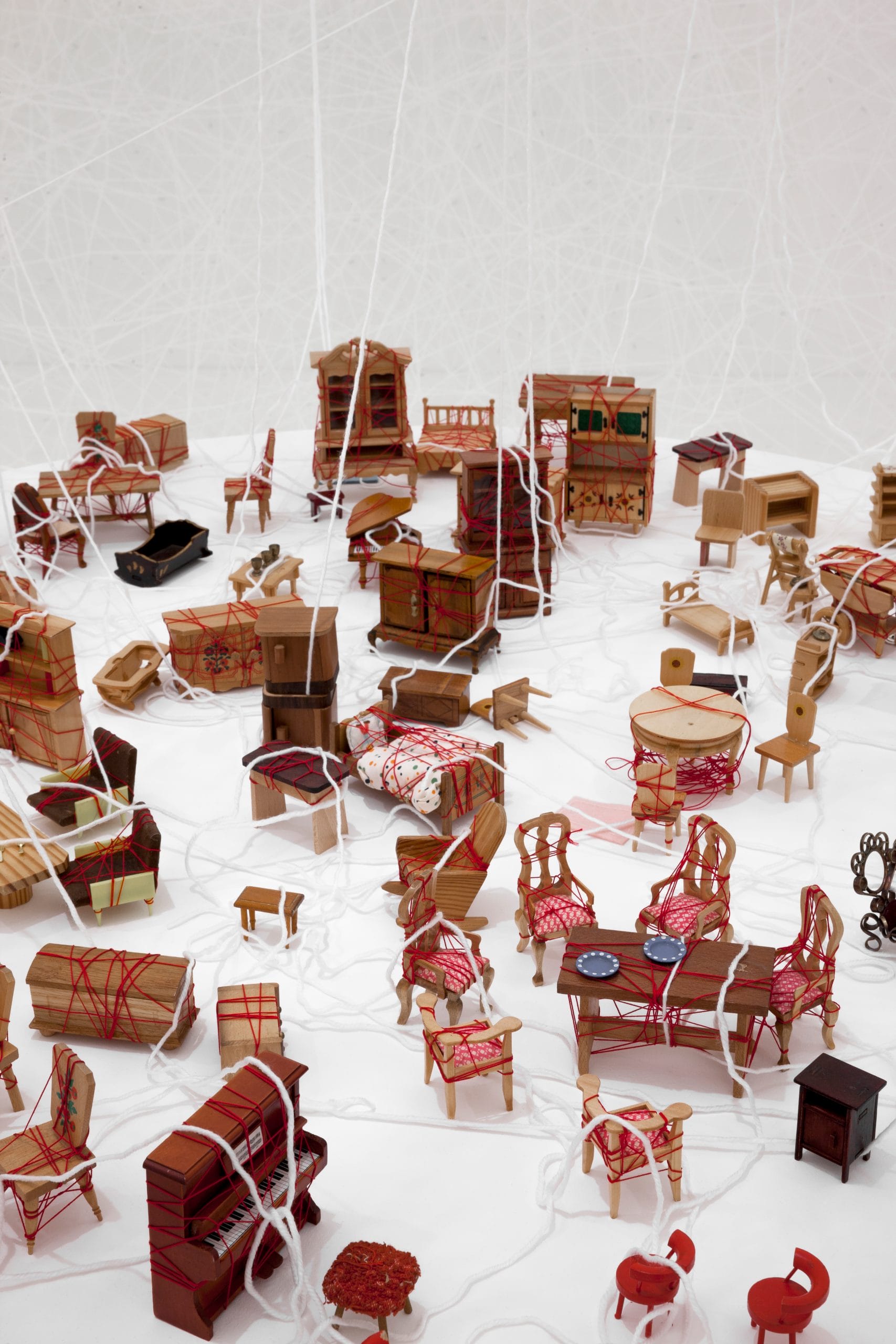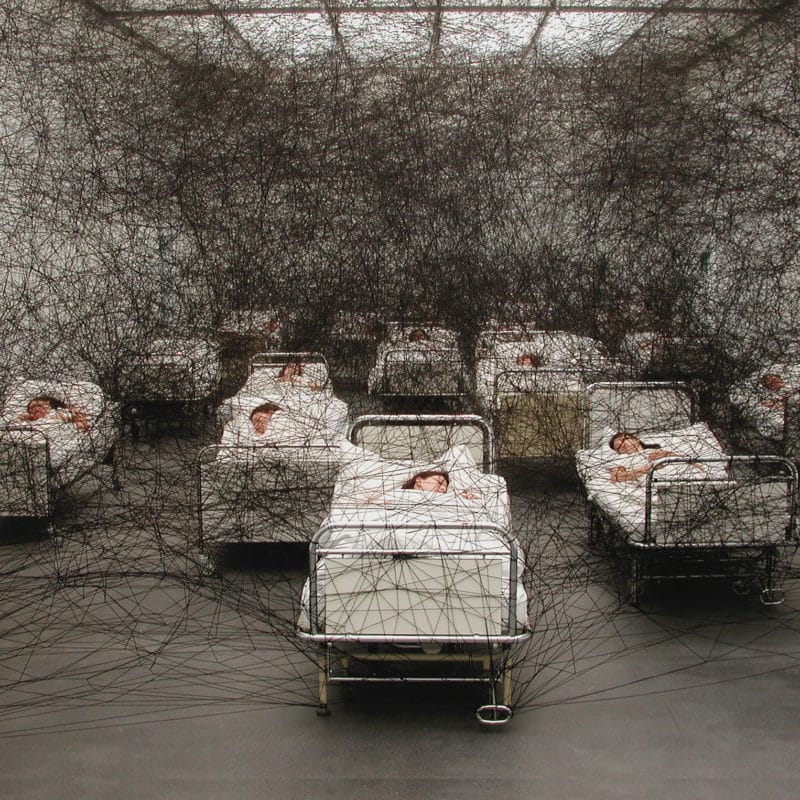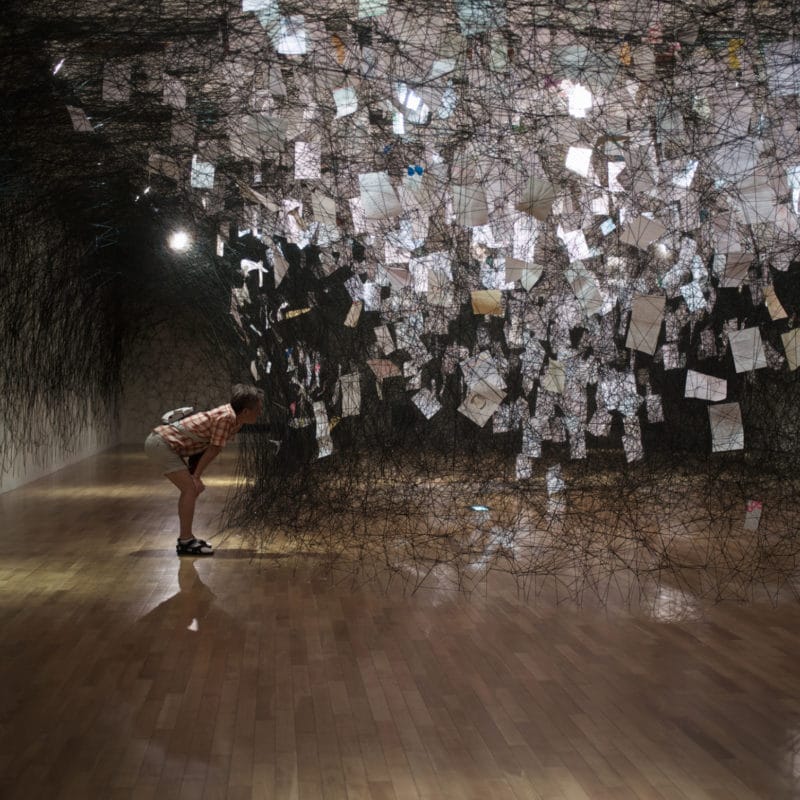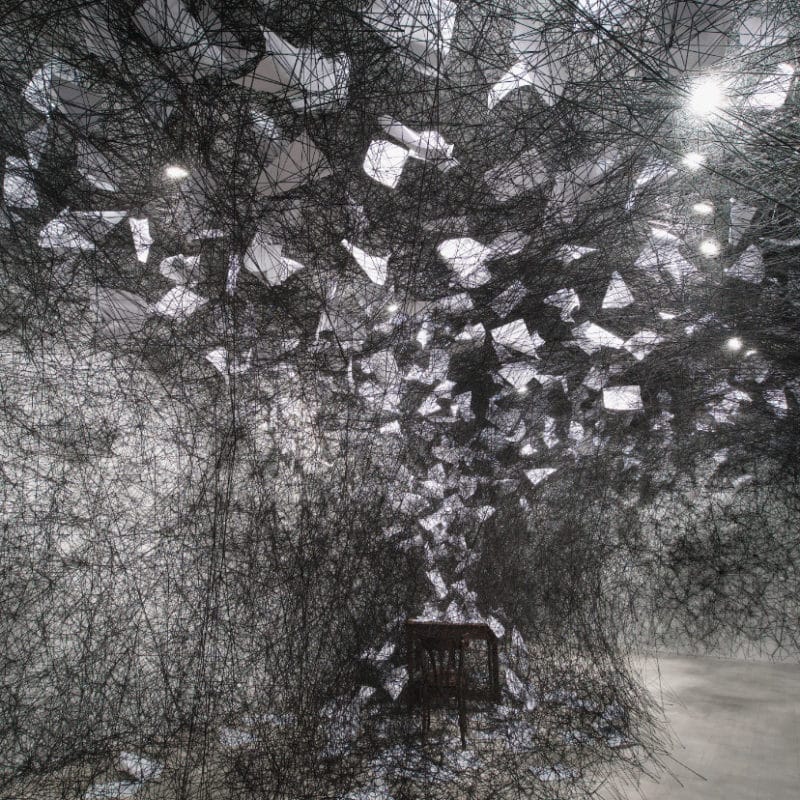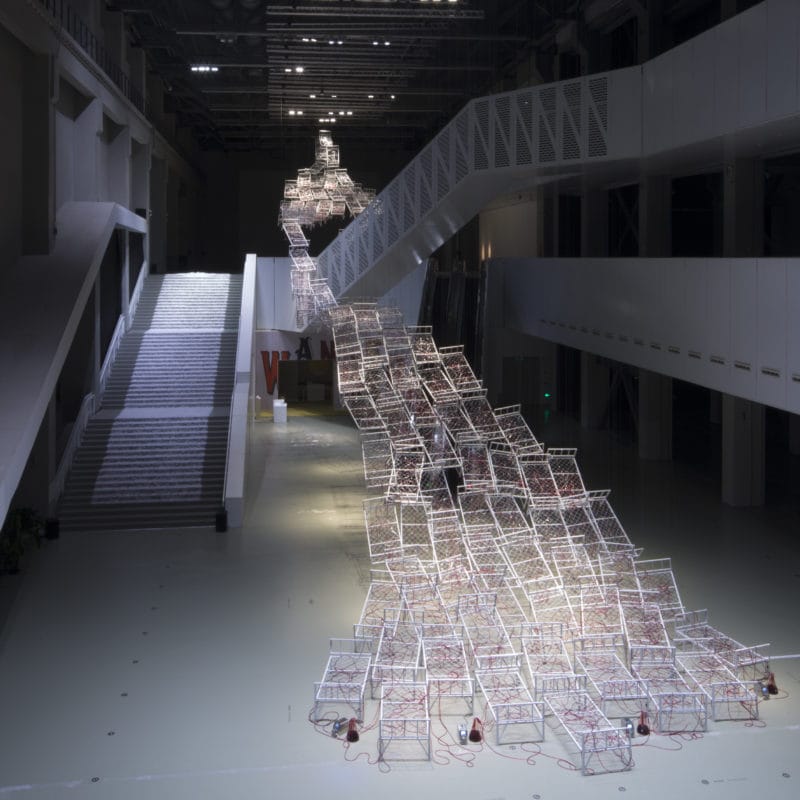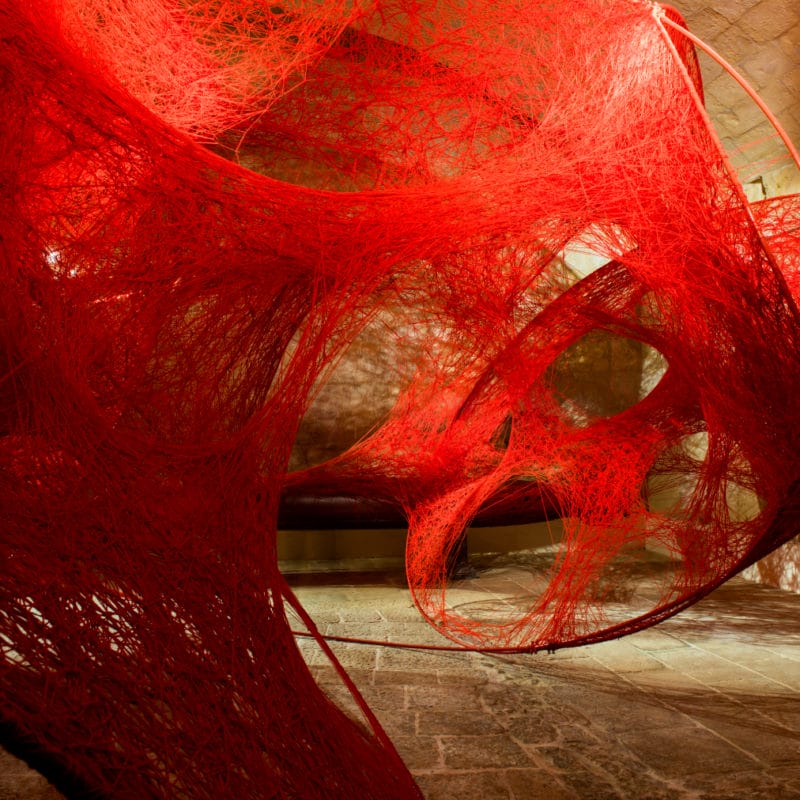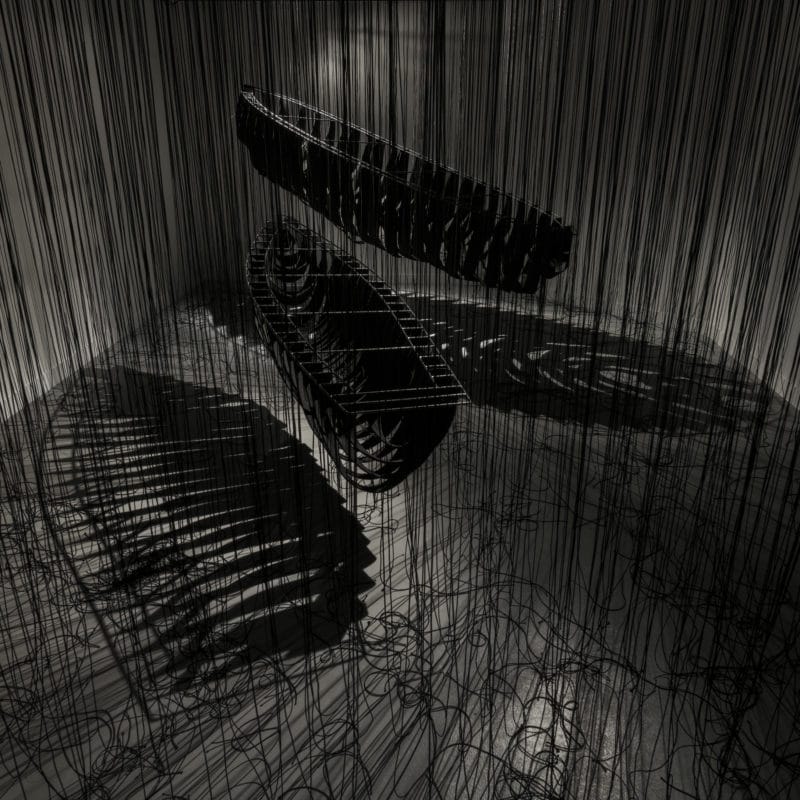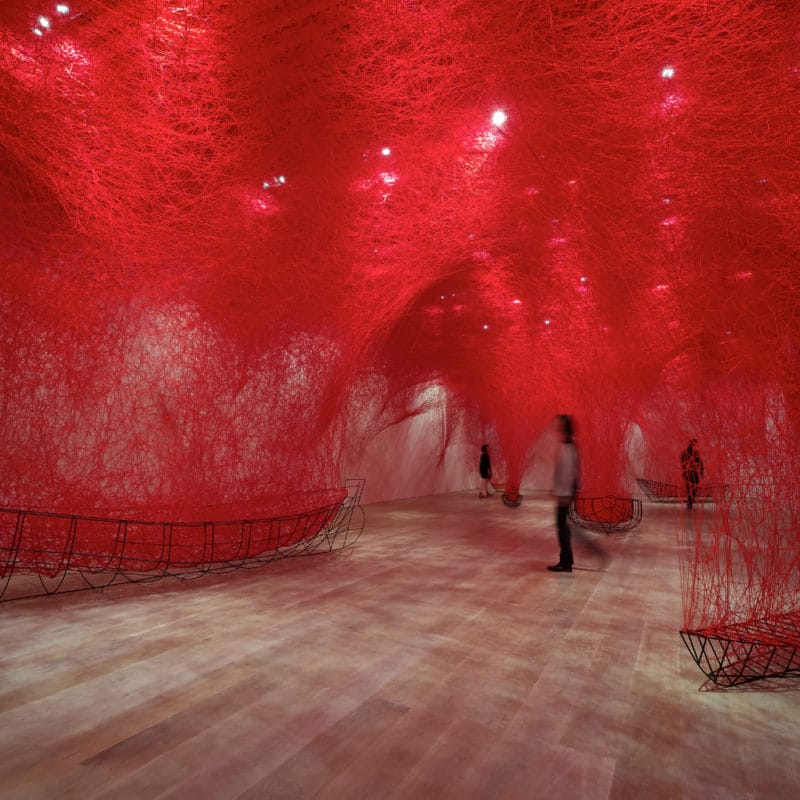The intensity of the creative gesture in Chiharu Shiota’s threads architectures
Chiharu Shiota, Japanese artist born in Osaka in 1972, has been living and working in Berlin for many years.
Her works, exhibited in solo and group exhibitions, have been hosted in prestigious international art and museum institutions. In 2015 the artist represented Japan at the 56th Venice Biennale.
Shiota’s works range from a multiplicity of mediums such as sculpture, painting, performance, video and photography; but the artist is best known to the international public at large for her enigmatic and contemplative yarn installations that design spaces creating temporary, spiritual and engaging settings, complex three-dimensional weaves and knots that give life to transient architectures.
The introspective research is the fulcrum around which all the artist’s works revolve, exploring the universal themes of existence, death, solitude and memory with a meditative approach that allows the viewer to come into contact with the artwork and its creator.
Beyond Memory”, 2020, Installation: wool, paper, Centro Cultural Banco do Brasil, São Paulo, Brazil, Photo by Atelier Chiharu Shiota, © SIAE, Rome, 2020 and the artist
Chiharu, can you tell us something about you and your story as an artist?
When I was a child, I wanted to become a painter, but when I painted it looked like someone else’s work, and I wanted to use my own material. I stopped painting and changed to installation. I am artist in Germany since 1996. I feel as I am always between two countries – Germany and Japan. Many of my work has the theme of death and life. I am interested in human existence. There are lot of questions in life but no exact answers.
Your works range from sculpture to drawing, painting and thread installations. The thread is also present in some of your sculptures, such as “State of Being (Dress, Key)”. When and why did you start using thread as a medium in your works and what are the expressive potential you perceive to be present in it?
I was studying at the painting department, but in my second year I felt limited to the two-dimensional canvas, I started using different materials like water, dirt and fire and at some point, I picked up some yarn and began drawing in the three-dimensional space. A single line of thread is like a line in a painting. Thread can make an environment; I am working in the space and people can feel immediately when they walk in. They can feel what is behind the artwork – they feel the meaning for themselves.
Very often within the complex weaves that are part of your installations, simple, everyday objects are inserted, sometimes they are suspended between the threads. What is their role within the work?
I always use old objects that someone was using before because a lot of memory remains in these objects. Even though I did not meet the owner of this object, I can see their existence in the shoes, keys, beds and dress. This is the theme of my work “existence in the absence”.
Your majestic and intricate threaded installations, with spaces saturated with weaves and knots, with the use of a unique and intense colour, stimulate a strong emotional and sensory impact in the viewer. Certainly, everyone interprets what they observe according to their own point of view and experience. But if you could somehow convey the interpretation of your works, what would you like the viewer to see in your installations?
The viewer can feel whatever they want when they enter the space. There are no rules how I want them to see my work. Because an artist has no particular answers – only questions, so, it is important how the viewer feels.
Do you create your works following a precise project or do you realize them on the moment, letting your instinct guide you? What are the challenges you have to face when you are in front of a large space in which to build your weavings?
Both. So, especially for the solo exhibition I am quite free, I visit the space and imagine what I can do. When I enter the space, it feels like I transcend into another dimension. Afterwards, I draw a few sketches and discuss with the organizers what could be possible.
But for a group show, the curator already created a theme. I have to work more with the concept of the group show.
To create a work in a large space is most difficult. If I stand in a 50-meter-high church – this is a challenge because I never did anything like this before, like in 2018 at Le Havre. They wanted me to create a work for the St. Joseph’s Church. This seemed impossible. You could not fix any string on the walls because of historic preservation. I had many meetings with technicians and had to create something I had never before.
“Accumulation of Power”, 2017, Installation: metal rings, red wool, A Summer in Le Havre: 500th Anniversary of Le Havre, St. Joseph, Le Havre, France, Photo by Philippe Bréard © SIAE, Rome, 2020 and the artist
What is the destiny of your installations at the end of an exhibition? Will they be destroyed?
After my exhibition, the string installation is cut and destroyed, but it stays in the memory of the visitor.
How has your work evolved over the years? Are there important stylistic, aesthetic or conceptual differences between your early works and your more recent ones?
The concept is the same. My theme is always “existence in the absence” and working with memory and also weaving human items into the web. All my work has similar concepts. For example my video work “How did you come into the world?” was a very different medium, but the theme was memory. The first memory you have ever had. Also the video “About the Soul” was about death and existence, when the body dies, where do you go?
I always work with human memory. Memory exists but you cannot touch it. If someone dies, the memory remains very strong and even though no one is there you feel like this person is present. The theme of my work is ‘existence in the absence’.
Among your works is there one in particular that represents you more and to which you are particularly attached? And is there one of the many works that you have created over the years, one in which you don’t recognize yourself and that you feel distant from your current artistic style?
The installation “The Key in the Hand” at the Venice Biennale in 2015 was very special. It was an honour to represent Japan, especially since I had already been living in Germany for 18 years. Venetian boats were sailing through red yarn and 180 000 old keys were put into the installation. Most people think of this installation when they think of my work.
Everything I make is new, I feel no distance.
“The Key in the Hand”, 2015, Installation: old keys, old wooden boats, red wool Japan Pavilion, 56th International Art Exhibition—La Biennale di Venezia, Venice, Italy – Photo by Sunhi Mang, © SIAE, Rome, 2020 and the artist
What are you working on right now? Would you like to tell us about your current projects and upcoming exhibitions?
At the moment, I have two shows in South Korea. My installation “Living Inside” at the group exhibition “OH! My City” at Paradise Art Space in Incheon and my solo show “Between Us” at Gana Art Center in Seoul. Within the installation “Between Us”, I put 30 chairs – each chair is an individual person, there is distance between them, but the red thread connects them. The installation looks like it was inspired by Covid-19 because the distance between the chairs, but this was not my idea, just looks similar. But this has become more intense to think about today.
I have an upcoming exhibition at the first contemporary art museum in Vietnam this autumn, but I cannot give any details until they officially announce.
